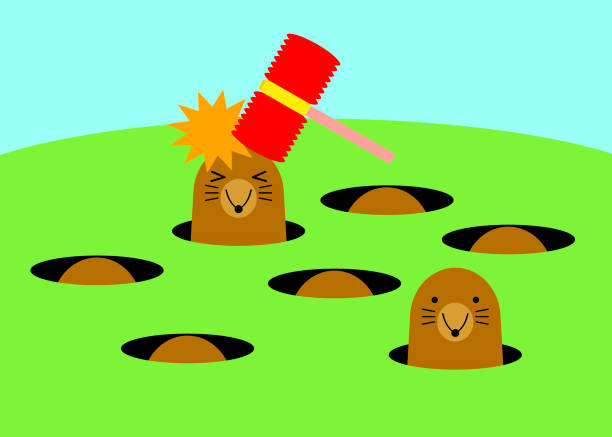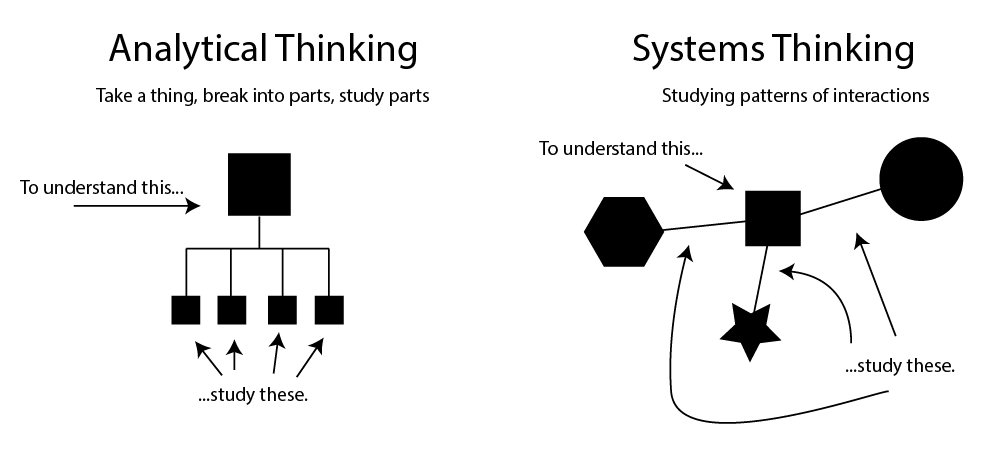What is Idealized Design?
Idealized design answers the question, “Ideally, what would we like the program to be?”
Why Idealized Design?
Most improvement efforts focus on problem solving or what went wrong. At best, this results in marginal gain. More often solving one problem just causes another (bigger) one to pop up.

Image courtesy of Whack A Mole Game
When Do We Do It?
- Make major improvements in a product, process or organization.
- Incorporate the values, experience and insights of all the stakeholders in a system.
- Focus on overall purpose rather than performance of individual parts.
The Broader Context
Science and education typically involve analytical thinking, which may reveal how a system works, but not understanding of why it works the way it does.
In contrast, Idealized Design is a systems thinking methodology. It entails a focus on purpose and desired ends and how best to meet them.

Image courtesy of Alan Klement

How Does Idealized Design Work?
Idealized design works by (1) drawing on stakeholder experience/ insight, and (2) eliminating constraints.
What’s not going to happen is: Someone offers a suggestion that an “expert” will silence. Rather, we facilitate, drawing out your experience and insight. And rather than tinkering with current structure, idealized design starts from scratch.
How Do We Do It?
Participants perform two major functions: generate specifications and develop a design.
Specifications state a desired property or characteristic. Specification statements should begin with phrases such as ‘I would like …’.
In the design phase, participants create or draw structures and processes to bring about one or more desired specifications.
Guidelines for Ideation:
To eliminate barriers to idea creation:
- Imagine that the program never existed, and we were now to create one.
- Don’t worry about whether resources are available to implement an idea.
- Suggestions are subject to a single constraint: that they be physically possible, e.g., no time travel. But when in doubt, go ahead and shout it out.
To focus on desired specifications:
- Stay in design-from-scratch mode.
- Do not specify what isn’t wanted.
- If you disagree with someone else’s specification, state an alternative.
Origins
Idealized Design was originally conceived by Russell L. Ackoff and his client, Bell Labs, in the 1950's to help the organization get beyond "problem solving mode" and unleash their innovative potential:
“An idealized design of a system is the design its stakeholders would have right now if they could have any system they wanted.... It is called idealized because it is the best ideal-seeking systems its designers could imagine at the time, recognizing that they and others may be able to imagine a better one in the future.”
References
Overview
- Ackoff, Russell L. (1981) A Brief Guide to Interactive Planning and Idealized Design
Articles
- A Conversation between Russell Ackoff and Edward Deming The unedited transcript of the conversation between Ackoff and Deming reveals the views of two preeminant thinkers in systems thinking. They discuss the relevancy and the application of systems worldview to the intractable problems and societal ills.
- Knowledge@Wharton. Idealized Design: How Bell Labs Imagined -- and Created -- the Telephone System of the Future. August 19, 2009.
- Bourne, Jason. Spend Matters. Introducing “Idealized Design" -- You Can Have Your Savings Cake and Eat it Too. August 5, 2009.
- Shifting Your Customers into "Wish Mode": Tools for Generating New Product Ideas and Breakthroughs by James Magidson
- Seeing Your Company as a System by Andrea Gabor
- Systems Thinking and Senior Level Leadership by George E. Reed
- Systems Thinking and Its Implications in Organizational Transformation by John Pourdehnad and Gnana K. Bharathy
Books
- Ackoff, Russell L. (1981) Creating the Corporate Future
- Ackoff, Russell L. (1999) Re-Creating the Corporation: A Design of Organizations for the 21st Century.
- Ackoff, Russell L., Jason Magidson & Herbert J. Addison (2006) Idealized Design: How to Dissolve Tomorrow's Crisis...Today .
- Flood, Robert L. and Michael C. Jackson (1991) Creative Problem Solving: total Systems Intervention
- Gharajedaghi, Jamshid (2006) Systems Thinking: Managing Chaos and Complexity
- Jackson, Michael C. (2003) Systems Thinking: Creative Holism for Managers.
- Systems Community (2013) Russell Ackoff Memories
Cases
- Academy of Vocal Arts by Jason Magidson
- Carfree Cities by J.H. Crawford
- Healthcare Products by Jason Magidson
- NACUFS Meets Idealized Design by Bruce Flye
- Perinatal Care Virginia Infant Mortality Work Group
- Process Redesign by Jason Magidson
- Product Design by Jason Magidson
- Sales Training by Jason Magidson
- White House Communications Agency by March Laree Jacques
Papers
- A Brief Guide to Interactive Planning and Idealized Design by Russell L. Ackoff
- A Useful Distinction between Managers and Leaders Russell L. Ackoff (His last article only available via Emerald)
- Corporate Pathology by Jamshid Gharajedaghi
- Crowdsourcing Business Model Innovation: Using Social Media Platforms and Design Thinking by John Pourdehnad and Dan Baker (Work in Progress)
- Mechanisms, Organisms and Social Systems by Jamshid Gharajedaghi
- On the Nature of Development by Jamshid Gharajedaghi
- Redesigning the Academy of Vocal Arts (AVA) by John Pourdehnad and Adele Hebb
- Social Systems: Dichotomy or Dialectic by Jamshid Gharajedaghi
- Systems Approach to Knowledge Development for Creating New Products and Services by John Pourdehnad and Patrick J. Robinson
- Systems Methodology: A Holistic Languate of Interaction and Deisgn by Jamshid Gharajedaghi
Presentations
- Idealized Design: An "Open Innovation" Process by John Pourdehnad
- Organizational Transformation Presentation from John Pourdehnad
Theses
- Application of Interactive Planning Methodology by Donna Aura Lumbo
- Involving Users in the Design Process by Charlotte E. J. Pittman
- A Design Thinking Approach to Leadership Development by Tamara Nuzzaci
Videos
- ICSTM Keynote 2004 with Russell Ackoff
- Beyond Continuous Improvement with Russell Ackoff
- Idealized Design: How Bell Labs Imagined -- and Created -- the Telephone System of the Future
- Systems Thinking with Russell Ackoff
Steven F. Freeman